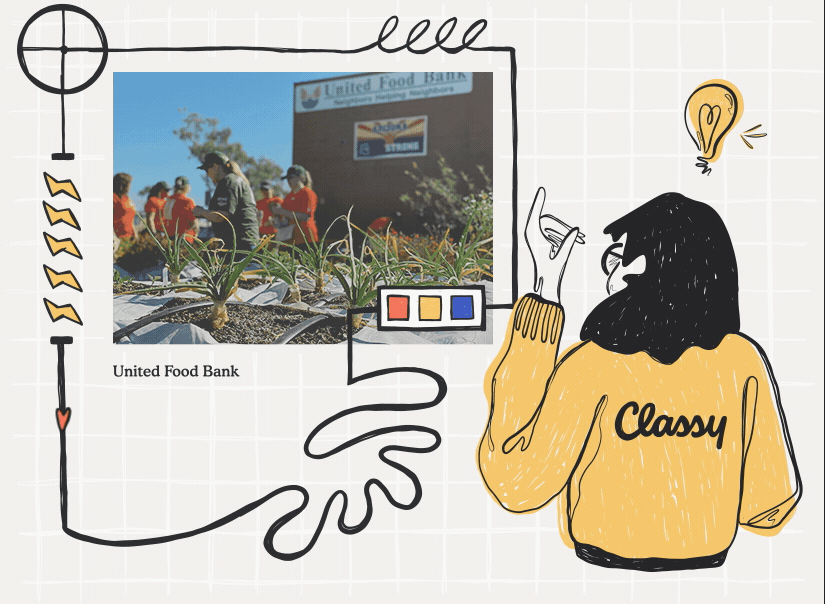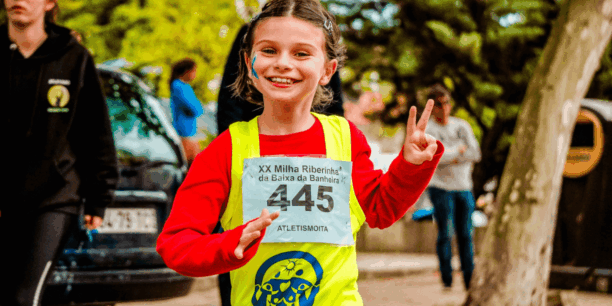How to Innovate to Solve Social Problems

Innovation is key to solving the most challenging social problems of our time. But before breakthroughs can take place, many social impact leaders face similar questions:
- Where can we start the problem-solving process?
- What are some ways we can take risks to find the best solutions?
- What do innovative initiatives look like?
To help get your creative juices flowing, we’ve rounded up a few tips on how to innovate to solve today’s social problems. Each suggestion features an organization from our list of 2022 Classy Awards winners and how they approached a timely challenge creatively and effectively.
1. Adopt Possible Solutions From Other Sectors
Some of the most effective ideas for innovation come from adopting strategies or technologies that have led to breakthroughs in other sectors. A successful business model from another industry may revolutionize your own.
Examples of How to Solve Social Problems Through Solution Adoption
Well Aware
Using mobile apps has become part of everyday life for many people but isn’t commonly associated with philanthropy. Well Aware, however, shows why tapping into this solution can be helpful for addressing social challenges.
The nonprofit decided to use an innovative smartphone app to address a lack of access to clean water in rural East African communities. Its app makes it possible to investigate, plan, design, implement, and fundraise for custom clean water systems that fit the specific needs of these areas.
Well Aware’s efforts have impacted the lives of over 300,000 individuals through more than 90 water projects. This transformative technology has helped the nonprofit carry out ongoing water system maintenance and diagnostics.
As a result, the nonprofit maintains a 1,005% success rate—an incredibly high benchmark in the industry, especially considering the 60% failure rate of water projects in Africa.
World Telehealth Initiative
Telehealth refers to the broad variety of healthcare and health education services delivered through technology. While a standard practice in certain areas of the world now, other developing regions don’t have the systems and technologies to support it.
The World Telehealth Initiative (WTI) leverages telehealth technologies from the healthcare sector to transform medical access for vulnerable communities worldwide. With this model, WTI has connected more than 350 volunteer physicians with over 24 hospitals across Asia, Africa, South America, and the Caribbean. These partnerships provided 925 telehealth sessions in 2021 alone.
Using social problem-solving skills learned through the rapid expansion of telehealth technology during the COVID-19 pandemic, WTI planned to increase its global footprint to 40 partner hospitals and 1,000 physician volunteers by the end of 2022.
Games For Change G4C Student Challenge
Applying what it knows about gaming, Games For Change developed and launched its G4C Student Challenge.
The challenge is a national design competition that invites middle and high school youth in the US to create digital games about the root causes of issues impacting their communities. Through this work, students master critical thinking, decision-making, communication, collaboration, and creativity through gaming.
By leveraging ideas from the gaming sector, Games For Change has been able to connect with its target demographic better. In 2021, the program reached 4,071 students and trained 282 teachers. And in just three years, students in the program submitted more than 2,900 games to the national competition, indicating program completion and a demonstration of their learning.
2. Invest in At-Risk or Overlooked Populations
Your best solutions may not look like material inventions that enhance people’s lives or new methodologies that transform the way nonprofits function.
When society overlooks certain populations or perceives them to be problematic, your choice to invest in them is innovation within itself. Your efforts can serve as the catalyst needed to change lives and perspectives. Being problem solvers for big social issues, like homelessness or public health crises, will likely inspire more people to join your cause.
Examples of How to Solve Social Problems Through Ambitious Action
America Needs You Fellows Program
The America Needs You Fellows Program focuses on first-generation college students. While this population has already made great strides by being accepted into an undergraduate program, they don’t always receive the support they need to ensure their continued success.
Each first-generation college student is paired with a trained volunteer mentor or coach for a two-year program, receiving more than 200 hours of career insight and personal support.
The nonprofit’s investment in this overlooked group helps ensure the students can complete internships, graduate, and secure employment. In 2021, 244 students completed the program.
KABOOM! Play Everywhere Program
While many nonprofits focus efforts on children in need, KABOOM! zeros in on a specific population of children to help—those without access to a park near their homes. Through behavioral science research, KABOOM! created the Play Everywhere Program as an innovative strategy to address play space inequity. The nonprofit uses play to spark social, emotional, and physical growth for 28 million children.
3. Embed Sustainability Into Your Program Design
For nonprofits looking to solve social problems, a temporary fix isn’t good enough. Addressing social situations needs to happen through a lens of sustainability. Both startups and established organizations can innovate by empowering the individuals they serve to participate in the solution.
Examples of How to Solve Social Problems Through Sustainability-Minded Programming
Nuru International
Farming communities in fragile areas of Sub-Saharan Africa suffer from extreme poverty and lack access to tools and knowledge to achieve brighter futures. Nuru International works with these farming communities.
More specifically, Nuru International supports farmer-led cooperatives that equip farmers with training, inputs, and infrastructure in Kenya, Ethiopia, and Nigeria. This model includes an innovative leadership development program called a “Sustainability Engine” to restore capacity to local leaders. After about 5 to 7 years of implementation, the nonprofit leaves behind a completely self-sustaining impact model owned and operated by these empowered individuals.
In 2021, Nuru International served 7,475 farmer households, resulting in a 65% increase in crop yield and a 42% increase in household income. From the beginning, Nuru International has embedded sustainability into its program design.
Trees for the Future
Climate change, generational poverty, and chronic hunger are several critical social problems that Trees for the Future has a mission to address. The nonprofit’s approach to solving these issues is to train farmers in sustainable land use.
Trees for the Future helps farmers transform their land to create new possibilities for themselves and their communities for generations to come. Farmers using this innovative approach have seen their income increase by 400% and have gained food security within three years. Meanwhile, the initiative has also planted more than 193,000,000 trees since 2019.
Organizations learn how to innovate, push boundaries, and develop new solutions when connecting and collaborating with others.
While it’s common to collaborate with an organization in the same sector, there’s something about partnering across sectors—and in large groups—to come up with lasting solutions.
Examples of How to Solve Social Problems Through Cross-Collaboration
Green Bronx Machine Foster Care Farm and Tiny Home Village at Stepping Stones Residential Facility
To support foster youth in their transition out of the foster care system, Green Bronx Machine partnered with other sectors to address everything from food deserts and unemployment rates to housing and addiction treatment.
More specifically, it partnered with Stepping Stones Residential Treatment Facility to build the first-ever commercial farm staffed and run by foster youth. The hydroponic farm provides living-wage employment opportunities with 21 tiny homes for foster youth aging out of the foster care system.
In 2021, the program employed 45 students at the greenhouse and housed six foster youth in tiny homes on campus.
Yamba Malawi Childhoods & Livelihoods Program
In Malawi, 70% of the population lives in extreme poverty, and 64% of children lack a combination of nutrition, health care, education, housing, water, sanitation, and social protection. To provide support for such a wide array of needs, Yamba Malawi launched an innovative child-focused poverty graduation program.
This three-year program works with various caregivers and community partners to provide necessary wraparound support, such as training, mentoring, seed funding for businesses, and digital finance. As a result of this collaboration, Yamba Malawi has impacted the lives of more than 200,000 children, including 53,000 in 2021 alone.
5. Rethink a Traditional Process for Possible Solutions
Some of the most successful innovations in recent years simply provided a new approach to an existing solution. Determine how to innovate by identifying a creative way to elevate a stale idea.
Examples of How to Solve Social Problems With Modern Ideas
New York Sun Works
Access to quality STEM education is greatly lacking, particularly among low-income students and those who are at-risk, require special accommodations, or are currently underrepresented in STEM fields. New York Sun Works identified the holes in how institutions currently delivered STEM education and found a way to fill those gaps.
The nonprofit’s program is the first of its kind and provides inquiry-based STEM and sustainability education to kindergarten through grade 12 students through the lens of urban indoor agriculture. By taking this creative approach to a more traditional curriculum, New York Sun Works brought crucial STEM education to 155,000 students from 2019 to 2021.
Sanku Project Healthy Children
Malnourishment is a grave concern in Sub-Saharan Africa, and Sanku Project Healthy Children aims to help the 28 million children in Sub-Saharan Africa experiencing it. Traditional approaches to this social problem might include delivering food to these communities. However, this nonprofit wanted to rethink that model to ensure greater sustainability in accessing nutritious food.
To accomplish this, the organization introduced its award-winning Sanku Dosifier—a fully automated nutrient fortification technology—to Tanzania and Kenya. It works with third-party implementers in Malawi and Rwanda. This technology empowers small-scale millers to produce fortified flour at no additional cost to themselves or their customers.
With 671 installments in 2021, communities have been able to produce more than 31,000 metric tons of grain.
VoteAmerica Tool Integrations
Efforts to increase voter turnout in US elections are often localized or focus solely on reminding people to vote. Despite these efforts, just 66.8% of citizens voted in 2020. VoteAmerica developed a new solution to this problem by providing publicly available election information data and tools to simplify the voting process in all 50 states and Washington, D.C.
By taking a new approach to a traditional process, VoteAmerica has made it easier for voters to verify their registration status and information, register to vote, request an absentee ballot, find a polling location, and more. Its innovative solution, alongside strategic partnership integrations, is an exponentially scalable one-to-millions approach, allowing them to reach 400,000 people in 2021 alone.
There are many ways nonprofits can innovate to solve social problems, whether through a creative social media campaign or a cross-sector collaboration. And you can leverage examples like those above to inspire your social problem-solving skills.
Know a nonprofit organization that we should consider for a 2023 Classy Award based on its ability to solve social problems? Has your nonprofit made any critical contributions that we should all elevate? Let us know. Nominations for the 2023 Classy Awards are open through March 7.
Learn More About the Classy Awards
Collaborative by Classy is another way to gain inspiration for your work. This two-day June conference brings together forward-thinking nonprofit professionals and social sector experts to uncover the ideas and strategies necessary to propel the industry upward and unlock the world’s generosity.

The State of Modern Philanthropy


